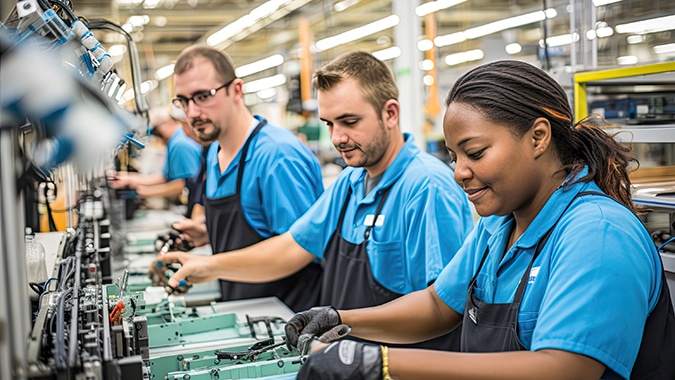With the pandemic’s global supply chain disruptions still reverberating today, industry experts recently held an online discussion to share lessons learned and identify best practices and strategies to help small and mid-size New Jersey manufacturers be prepared for whatever comes next.
“This is the new normal that we’re operating in,” said Robert Mazzuca, Business Development lead for the New Jersey Manufacturing Extension Program (NJMEP) during Wednesday’s “Manufacturing: Global Interdependence, Risk, Rewards, and Solutions” event presented by NJBIA and NJMEP. “We’re going to get through one crisis and then there will be something else.”
Mazzuca said manufacturers need to be prepared for future supply chain disruptions, pay attention to global warning signs and have a strategy in place. “Who knows what’s going to happen with China and Taiwan…there’s always going to be something else and then something else again.”
NJBIA Chief Government Affairs Officer Chrissy Buteas said the events of the past two years have laid bare the consequences of relying too much on goods produced overseas and the need for domestic manufacturers and distribution businesses to have skilled workforces in place.
“There is a proactive workforce development initiative underway to address this,” Buteas said, noting that NJBIA successfully advocated for NJ Pathways to Career Opportunities that will better align the state’s educational system with changing workforce needs.
“NJBIA is working with the state’s community colleges to address workforce needs in four critical areas – two of which are manufacturing and logistics,” Buteas said. NJMEP and the Port Authority of New York and New Jersey are active participants, she said, and urged more manufacturing and logistic companies to get involved to ensure there is robust workforce at the ready to handle increased domestic production needs during global supply chain disruptions.
Elizabeth Langmaid, senior market analyst for facilities and goods movement at the Port Authority of New York & New Jersey, said cargo volume remains up nearly 41% over pre-pandemic levels at the Port of New York and New Jersey, which just marked its second-busiest month ever in June.
“The congestion really started in 2021,” Langmaid said. “People were working from home … and there were the stimulus checks. People started spending and there was an increase in purchasing of durable goods over services, so we had a lot more imports coming through.”
The challenge that comes with a surge in cargo volume and congestion is that storage space is limited, Langmaid said.
“We’ve done a lot in the past six months to try to make new space,” Langmaid said. “We’ve opened three additional depots … we’ve found about 10 acres on port and another company that has 50 acres that we can utilize for empties…”
The Port Authority’s online blog “Breaking Waves” is a good resource for companies because it has information and contact numbers for all three depots, Langmaid said.
“So, manufacturing, warehouses, trucking, if they’re having trouble returning empties or with high dwells, they can reach out to these depots and get more information,” Langmaid said.

